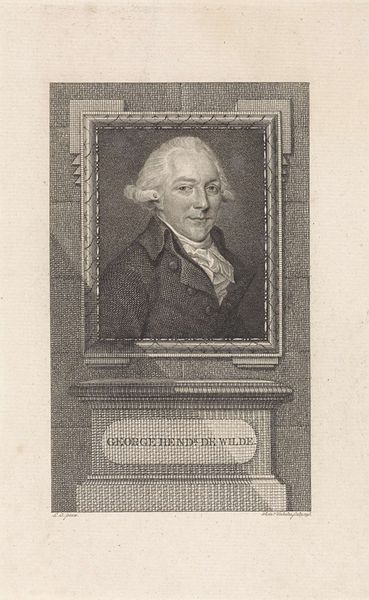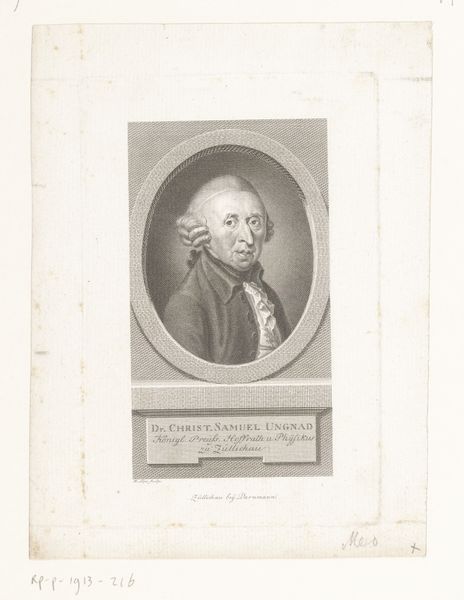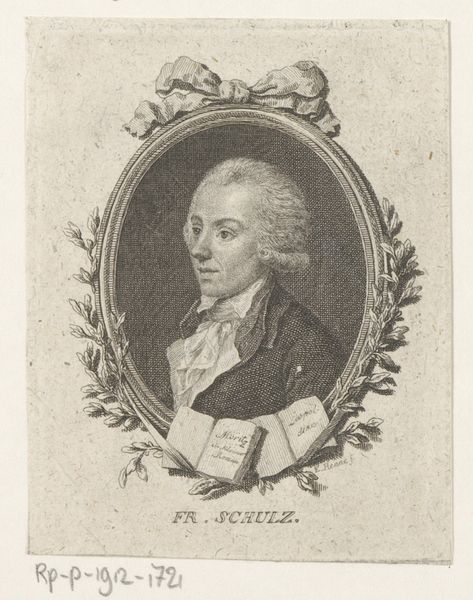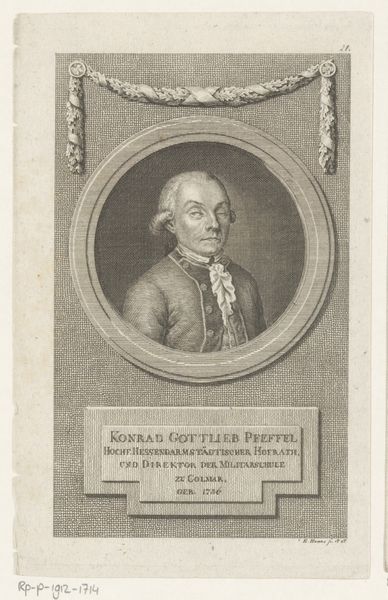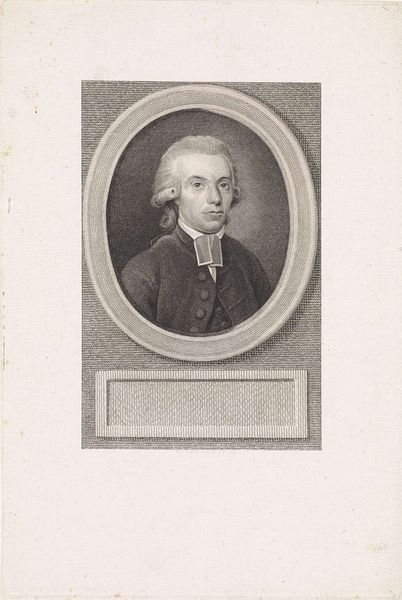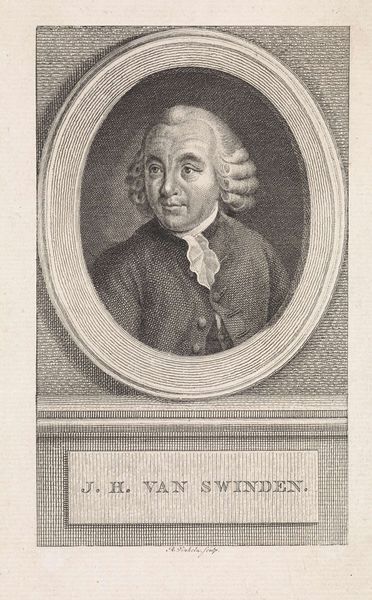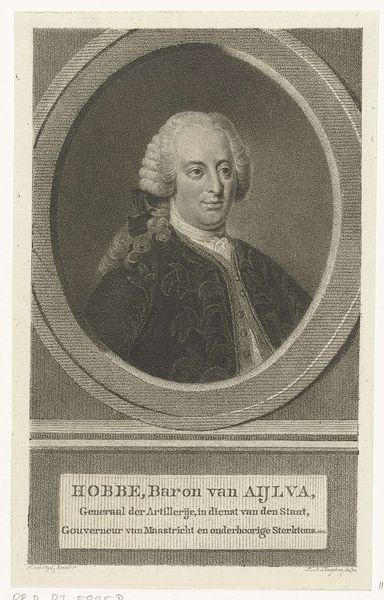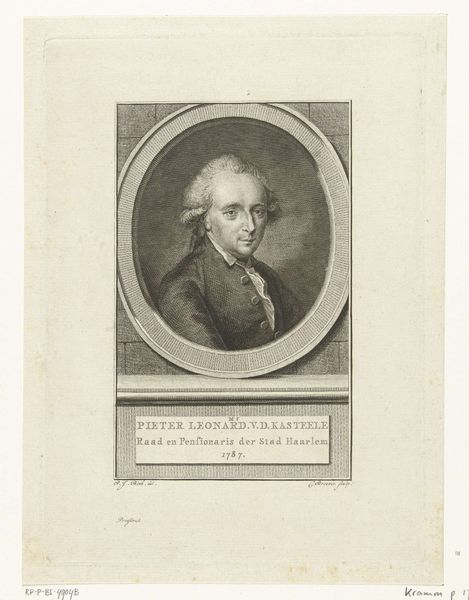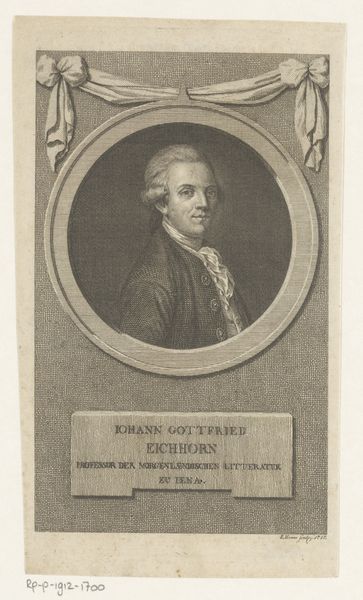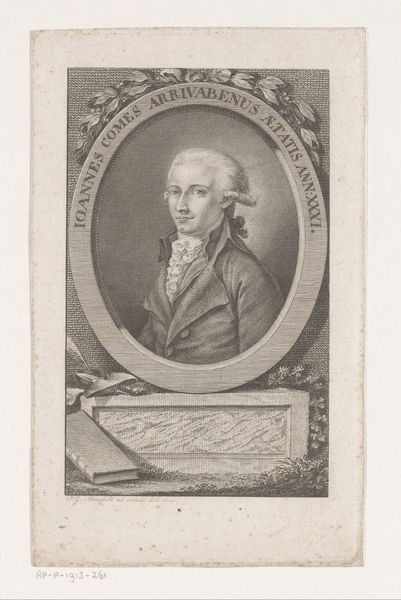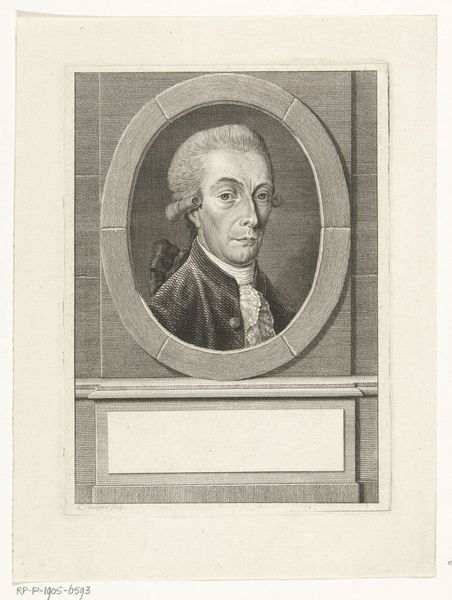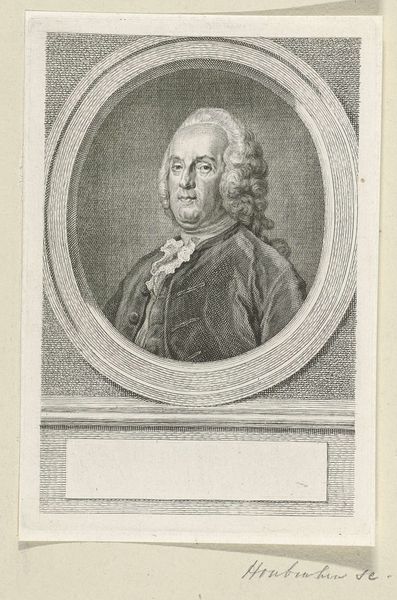
print, engraving
#
portrait
#
print photography
#
neoclacissism
# print
#
engraving
Dimensions: height 196 mm, width 125 mm
Copyright: Rijks Museum: Open Domain
Lambertus Antonius Claessens made this portrait of Pierre Victurnien Vergniaud using etching, a printmaking technique that democratized image production in the 18th and 19th centuries. In etching, a metal plate is coated with a waxy, acid-resistant substance called the ‘ground.’ The artist then draws through the ground with a needle, exposing the metal. Immersing the plate in acid etches the lines. This painstaking process, repeated multiple times for varying depths, allows for fine detail. The plate is then inked, and the surface wiped clean, leaving ink only in the etched lines. Finally, the image is transferred to paper under high pressure. Etching's rise was intertwined with social and political change. Its relative affordability made art more accessible, fueling the spread of information and ideas. While seemingly worlds apart from craft, etching shared values like precision and skill, blurring the lines between art and production. Understanding its process, labor and social context enriches our appreciation of this print.
Comments
No comments
Be the first to comment and join the conversation on the ultimate creative platform.
